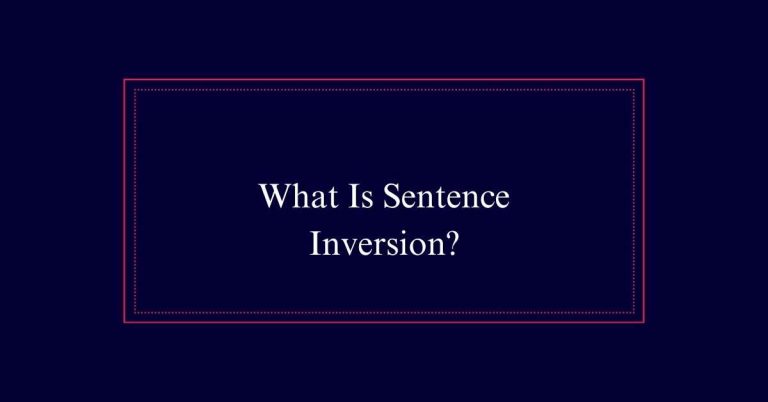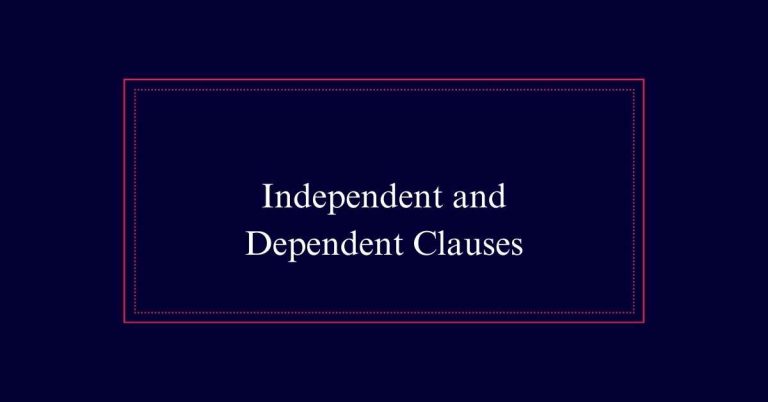Antonym: Definition and Examples
An antonym is a word that has a meaning directly opposite to another word. For example, ‘hot’ is an antonym of ‘cold.’ Antonyms are essential for clarifying meaning and adding contrast to language.
There are different types of antonyms: complementary antonyms like ‘on’ and ‘off’, gradable antonyms such as ‘big’ and ‘small’, and relational antonyms like ‘buy’ and ‘sell.’
What Is an Antonym?
An antonym is a word that has a meaning directly opposite to another word. For example, the antonym of ‘day’ is ‘night.’ Antonyms are used to show contrast between two ideas or objects. They are essential in language because they help to clarify meaning by highlighting differences. Antonyms can be used in various contexts, such as in comparisons and descriptions, to make writing more effective.
There are different types of antonyms. Complementary antonyms are words like ‘on’ and ‘off,’ where one state negates the other. Gradable antonyms, such as ‘hot’ and ‘cold,’ describe opposite ends of a scale. Relational antonyms, like ‘buy’ and ‘sell,’ indicate opposing roles within a relationship.
Origin of the Term
The term ‘antonym’ originates from the Greek words ‘anti,’ meaning ‘opposite,’ and ‘onyma,’ meaning ‘name.’ This etymology reflects the core concept of antonyms: words with opposite meanings.
The term was first used in the English language in the 19th century. It came into use as linguists and scholars sought to classify and understand different types of word relationships. The study of antonyms, known as antonymy, helps to clarify how language can express contrasting ideas.
Opposite Meanings
Understanding antonyms involves recognizing words with opposite meanings. Antonyms are a fundamental aspect of language that help convey contrast and diversity in expression.
For instance, the antonym of ‘day’ is ‘night,’ illustrating a clear opposition in meaning. Antonyms can be found in various forms, such as ‘hot’ and ‘cold,’ or ‘off’ and ‘on.’ These pairs show how one word’s meaning directly counters the other.

There are different types of antonyms, including complementary, gradable, and relational antonyms. Complementary antonyms, like ‘real’ and ‘fake,’ offer mutually exclusive choices. Gradable antonyms, such as ‘big’ and ‘small,’ represent different degrees of a quality. Relational antonyms, like ‘buy’ and ‘sell,’ reflect opposite roles in a relationship.
Synonyms Vs. Antonyms
Synonyms and antonyms are essential tools in language to convey similarities and differences.
Synonyms are words with identical or nearly identical meanings. For example, ‘large’ and ‘big’ are synonyms. They allow writers to avoid repetition and add variety to their texts.
Antonyms, on the other hand, are words with opposite meanings. For instance, ‘hot’ and ‘cold’ are antonyms. They are useful for highlighting contrasts and emphasizing differences.
While synonyms create nuance and subtlety, antonyms provide clear distinctions. Understanding both is critical for effective communication.
Examples of Antonyms
Antonyms clearly illustrate the concept of opposites with examples such as ‘day’ and ‘night’, or ‘big’ and ‘small’. These pairs help us understand the contrast between two ideas.
For instance, ‘hot’ and ‘cold’ are antonyms that describe opposite temperatures. Similarly, ‘happy’ and ‘sad’ show different emotional states. Antonyms can also be found in relationships, like ‘buy’ and ‘sell’, where each word represents the opposite action in a transaction.
Other examples include ‘up’ and ‘down’, illustrating directions, and ‘fast’ and ‘slow’, indicating different speeds.
Contronyms Explained
Contronyms are unique words that have multiple meanings, with some definitions being antonyms of each other. These words can be confusing because their meanings are directly opposite, depending on context.
For example, the word ‘dust’ can mean to remove dust from a surface or to add a fine powder to something. Another example is ‘cleave,’ which can mean to split apart or to adhere closely.
Contronyms, also known as auto-antonyms, showcase the rich complexity of language. Understanding these words requires careful attention to context. They are rare but fascinating examples of how a single term can convey fundamentally different ideas.
Purpose of Antonyms
Understanding the purpose of antonyms can greatly enhance the effectiveness of both written and spoken communication. Antonyms are essential tools for highlighting differences. They allow writers and speakers to draw clear comparisons and emphasize contrasts. This can make descriptions more vivid and arguments more compelling.
Antonyms also strengthen the impact of words by presenting their opposites. For example, describing something as ‘big’ becomes more powerful when contrasted with ‘small.’ Additionally, antonyms challenge readers’ or listeners’ expectations, creating engaging and thought-provoking content.
Complementary Antonyms
Complementary antonyms, also known as binary or contradictory antonyms, represent pairs of words where the positive use of one implies the negative use of the other. These antonyms are mutually exclusive and do not allow for any middle ground. For instance, something can either be “on” or “off,” but not both simultaneously. This characteristic makes them simple to understand and easy to identify.
Here are some examples of complementary antonyms:
| Complementary Pair | Explanation |
|---|---|
| On – Off | A device is either on or off. |
| Real – Fake | Something is real or fake. |
| Dead – Alive | A person is dead or alive. |
Gradable Antonyms
Gradable antonyms, also known as polar antonyms, describe opposite ends of a spectrum or scale. These antonyms allow for varying degrees between the opposites.
For instance, ‘hot’ and ‘cold’ are gradable antonyms because temperatures can range between them. You might describe something as ‘warm’ or ‘cool’ to indicate a position on this scale.
Another example is ‘young’ and ‘old,’ where ages can vary greatly. Gradable antonyms are useful for expressing nuances and subtleties.
Unlike complementary antonyms, they do not imply a strict binary. Instead, they offer a continuum. This characteristic makes them valuable in detailed descriptions and comparisons.
Can you provide an example of using an em dash as an antonym in a sentence?
Can you provide an example of using em dashes appropriately as an antonym in a sentence? For instance, “She was beautiful — not ugly — with her new haircut.” In this case, the em dash is used to create a contrast between the two opposing ideas.
Relational Antonyms
In contrast to gradable antonyms, relational antonyms define pairs of words that express opposite roles within a particular relationship. These antonyms are also known as converse antonyms. They highlight complementary roles that depend on each other.
For example, ‘buy’ and ‘sell’ are relational antonyms because they describe opposite actions in a single transaction. Another example is ‘teacher’ and ‘student,’ where each role exists in opposition within the educational context.
Relational antonyms are essential for understanding interactions and relationships. They provide clarity about the roles and responsibilities involved in various scenarios.






